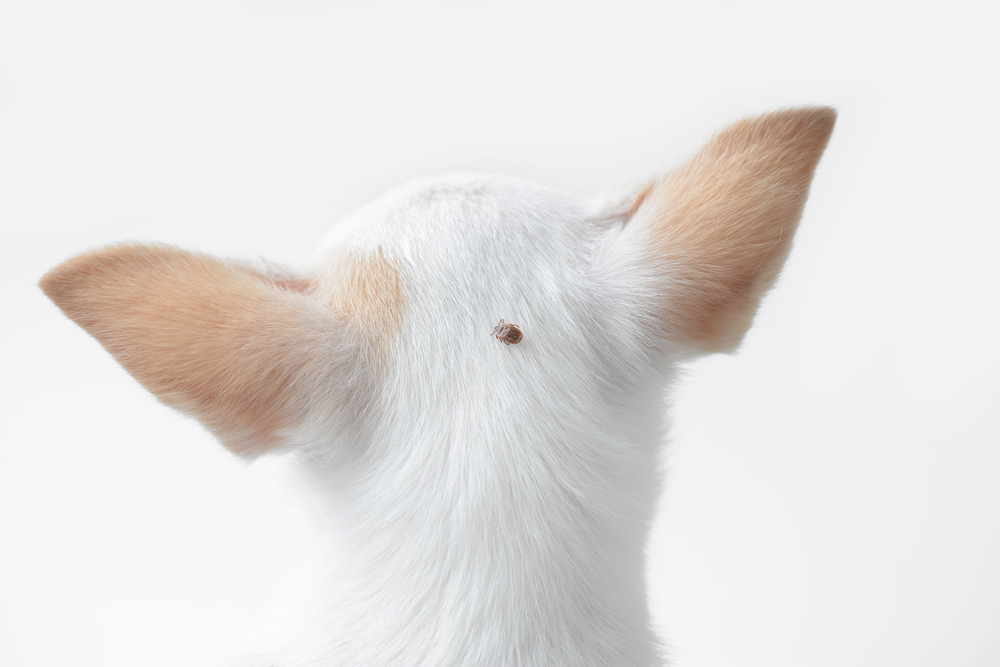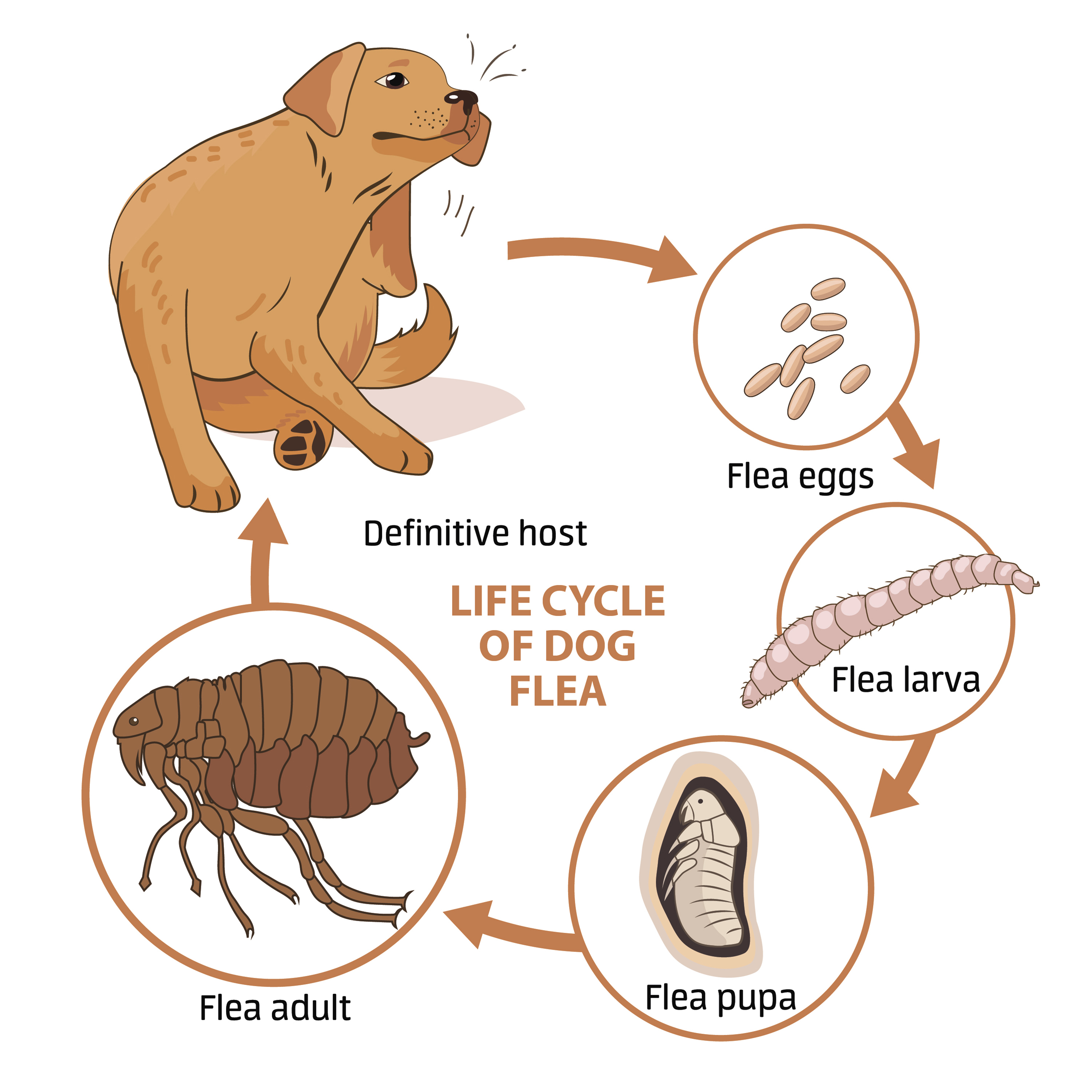Protecting Your Pet from Fleas and Ticks
With summer heating up, flea and tick season is in full swing. More than just a nuisance, these parasites are always looking for their next meal (your pet’s blood!), and they can transmit diseases to animals and humans. Here’s how to protect your pet from these bloodsuckers this summer.
FLEAS
What fleas look like
Fleas go through four life stages: egg, larva, pupa, and adult.
Flea eggs look like small, white grains of sand. After an adult flea has feasted, it will begin to lay eggs (up to 50 per day for several months!). They will be scattered throughout your pet’s fur and will fall off into the carpet or furniture when he shakes or lays down.
Flea larvae are what you’ll find when flea eggs hatch, which can take up to 2 weeks. Transparent, flea larvae can be hard to spot. They’re also blind and will do their best to avoid light by staying deep within the fur of your pet. Fleas will remain in the larva stage for 5 to 20 days.
Flea pupae are similar to butterflies in that they protect themselves in cocoons. The similarities end there, however, as what emerges will not be a colorfully patterned beauty ready to take flight. Flea pupae can stay in their cocoons until they sense that conditions are perfect for them to emerge and a suitable meal is nearby.
Adult fleas represent only about 5 percent of the total number of fleas in an environment at any given time, yet these are what pet owners spot most often. They are only about 2.5 millimeters in length but can usually jump one foot or more, which is often how they are spotted. Once they emerge from their cocoon, fleas feed on blood within a few hours and begin laying eggs.
Why fleas are dangerous
The damage from fleas is not limited to causing discomfort and itching. Fleas can also cause much bigger problems for your family members, both human and furry. They transmit diseases like Murine typhus, Mycoplasma haemofelis, tapeworms, and Cat Scratch Disease. Many pets are also allergic to fleas and can develop a skin condition called flea allergy dermatitis.
How to protect your pet from fleas
Fleas are hard to spot and kill individually, and even if you were able to kill all the adult fleas in your pet’s environment, you’d still be leaving 95 percent of the flea population there to become adults and wreak havoc on your pet. Use a year-round flea preventive product that kills fleas in all stages of life. And, never use a canine flea preventive on your cat.
Questions about fleas and flea preventive medications? Call us at 916-726-2334.

TICKS
What ticks look like
Ticks, like fleas, go through four life stages: egg, larva, nymph, and adult.
Tick eggs are usually laid away from the host animal.
Tick larvae are about the size of a grain of sand and will require a meal of blood before they can continue to the next stage of life. They have six legs and no wings.
Tick nymphs have eight legs and are about the size of a sesame seed. After a blood meal, a tick larva will molt (shed its outer skin) into a nymph, which will require another blood meal before molting again and becoming an adult tick.
Adult ticks are about the size of a pencil eraser until they eat, and can get much larger if they are able to find an uninterrupted meal. An unfed adult tick will be flat and oval, but once it feeds, it will become engorged. An adult tick can burrow its head underneath the surface of the skin while eating, so it may look like a headless insect on your pet.
Ticks prefer areas with lots of shade, trees, and tall grasses. Since ticks do not have wings, they will climb up large pieces of grass, waiting for a good host to get close enough for them to hop on.
Why ticks are dangerous
While Lyme disease is the most well-known ailment associated with ticks, they can transmit myriad other diseases, including: Ehrlichiosis, Anaplasmosis, Rocky Mountain Spotted Fever, and tick paralysis.
How to protect your pet from ticks
Reduce tick habitat in your yard by keeping grasses and shrubs well-groomed, controlling weeds, and picking up leaf debris.
Check your pet regularly for the presence of ticks, and, if you spot one, remove it immediately. Use tweezers to grasp the head of the tick as close to your pet’s skin as possible. Pull back gently without twisting or yanking until the entire tick is removed. Make sure the head is removed with the body. Place the tick in a jar with a little rubbing alcohol so we can identify it later if needed.
If you’d rather us remove the tick, or if you believe part of the tick’s head or mouthparts were left behind after you removed it, call our office.
There are preventive medications that can protect your pet from ticks, many of which also protect pets from fleas. Ask us about the tick preventive medication that would be appropriate for your pet.


